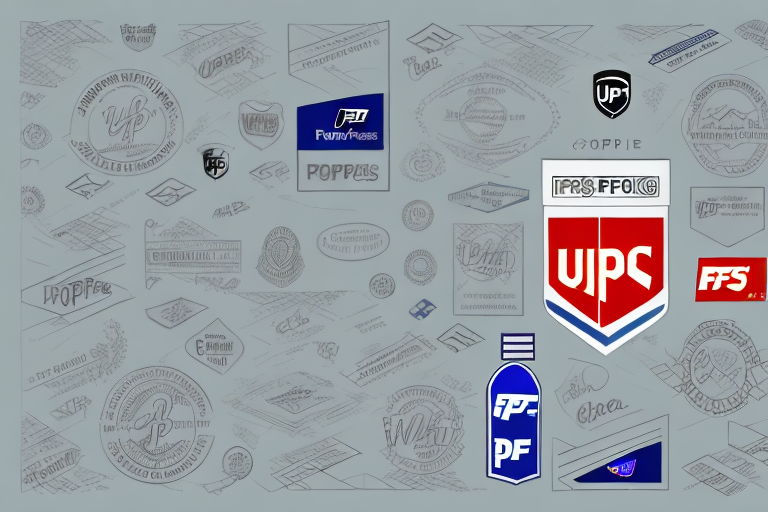Comparing UPS, USPS, and FedEx International Shipping Rates
In today’s global marketplace, shipping packages and goods internationally is an essential component for many businesses. Hence, having a reliable and cost-efficient shipping carrier is crucial to ensure smooth delivery to your clients. Three popular shipping carriers—UPS, USPS, and FedEx—each offer unique advantages and disadvantages. Evaluating these carriers helps determine the best fit for your international shipping needs.
Introduction: The Importance of Comparing International Shipping Rates
Selecting the right shipping carrier for your international business can be overwhelming due to the multitude of options available. Cost is a critical factor to consider. By comparing shipping rates between UPS, USPS, and FedEx, you can identify which carrier offers the most competitive prices, enabling informed decisions and keeping shipping expenses within your budget.
Additionally, delivery time plays a significant role. Some carriers may provide lower rates but longer delivery times, while others might charge more for faster delivery. Depending on your business needs, you may prioritize either cost or speed.
Furthermore, customer service is essential. A carrier with excellent customer service can assist in resolving issues such as lost or damaged packages, saving time and money, and providing peace of mind for both business owners and customers.
Understanding the Differences between UPS, USPS, and FedEx
UPS, USPS, and FedEx are reputable shipping carriers offering a variety of shipping options tailored to different business needs. UPS is renowned for its timely and reliable delivery services. USPS offers affordable shipping rates, especially for small packages, while FedEx specializes in fast international shipping services.
Regarding package tracking, UPS and FedEx provide more advanced tracking options compared to USPS. UPS and FedEx offer real-time tracking updates, whereas USPS provides tracking updates at specific points during the shipping process. For businesses that need precise package tracking, UPS and FedEx may be preferable.
When evaluating shipping rates, USPS often presents affordable rates for small packages, whereas UPS and FedEx might be more cost-effective for larger or heavier shipments. It's essential to compare rates based on your specific package size and weight to determine the most economical option.
How to Determine Which Shipping Carrier to Use for Your International Shipments
Before selecting a shipping carrier for international needs, evaluate the available options by considering factors such as delivery speed, cost, insurance, tracking, packaging requirements, and customer service. Comparing carrier services will help you choose the best shipping option tailored to your business requirements.
Researching customs regulations and requirements for the destination countries is also vital. Each country has specific rules that must be adhered to; non-compliance can result in delays, fines, or seizure of shipments. Working with a carrier experienced in navigating international customs can provide guidance on necessary documentation and procedures.
Factors That Affect International Shipping Rates
Numerous factors influence international shipping rates, including package weight, destination country, delivery speed, package type, customs fees and duties, and insurance coverage. Understanding these factors is essential for accurately comparing shipping rates among different carriers, allowing you to make informed decisions that best suit your business needs.
Another significant factor is the mode of transportation. Shipping by air is generally faster but more expensive than sea shipping. Conversely, shipping by sea may take longer but can be more cost-effective for larger and heavier packages. Consider the urgency of your shipment and your budget when selecting the transportation mode.
Shipping distance also affects rates. Longer distances typically result in higher shipping costs, and some carriers may impose additional fees for deliveries to remote or hard-to-reach areas. Always check with the carrier for any extra fees or surcharges that may apply to your shipment's destination country.
Comparing UPS International Shipping Rates: Pros and Cons
UPS offers a range of international shipping options, including air, ocean, and ground services. It is renowned for reliable delivery services, particularly for time-sensitive shipments. However, UPS rates are generally higher than those of its competitors, which may be less attractive for small businesses or those with tight budgets.
Despite higher rates, UPS provides a variety of value-added services that can justify the cost for businesses requiring additional support. For instance, UPS offers customs brokerage services to help businesses navigate the complex process of clearing customs, thereby avoiding costly delays. Additionally, UPS provides insurance coverage for international shipments, offering peace of mind for businesses shipping high-value items.
Another advantage of using UPS for international shipping is its extensive global network. With operations in over 220 countries and territories, UPS grants businesses access to new markets and customers worldwide, facilitating business expansion and international sales growth.
Comparing USPS International Shipping Rates: Pros and Cons
USPS is a cost-efficient option for international shipping, particularly advantageous for small businesses. USPS offers various affordable shipping rates, including flat-rate options. However, USPS offers fewer delivery speed options compared to its competitors, and delivery times may be inconsistent. Additionally, USPS provides limited tracking, insurance, and customer service options relative to other carriers.
Despite these limitations, USPS boasts advantages over other carriers. For example, USPS has a broader network of international partners, which can result in more affordable shipping rates to specific countries. Furthermore, USPS offers free pick-up services for certain shipping options, saving time and costs for businesses.
When evaluating USPS international shipping rates against your specific business needs, consider prioritizing cost-efficiency over speed and tracking. If your business does not require rapid delivery times or extensive tracking options, USPS may be the most suitable choice. However, for businesses needing more comprehensive shipping services, other carriers like UPS or FedEx may be preferable.
Comparing FedEx International Shipping Rates: Pros and Cons
FedEx is recognized for its fast international shipping services, making it an excellent choice for businesses that require swift delivery. FedEx also offers reliable tracking and excellent customer service. However, FedEx rates are typically higher compared to its competitors, and its insurance coverage options may not suffice for expensive or high-value shipments.
Another consideration when comparing FedEx international shipping rates is the company's delivery options. FedEx provides various delivery choices, including same-day, next-day, and two-day delivery; however, these options often come at a premium cost. Additionally, FedEx may not deliver to certain remote or hard-to-reach locations, limiting its usefulness for businesses with customers in these areas.
Tips for Saving Money on International Shipments with UPS, USPS, and FedEx
Despite varying rates among carriers, there are strategies to save money on international shipments:
- Negotiate Rates: Engage with your shipping carrier to negotiate better rates based on your shipping volume and frequency.
- Use Alternative Providers: Consider using alternative shipping providers or consolidators to reduce costs.
- Leverage Discounts: Take advantage of mail class discounts or shipping incentives offered by carriers to lower expenses.
- Optimize Packaging: Use appropriately sized and weighted packaging to avoid additional fees for oversized or overweight packages. Consider eco-friendly materials that are cheaper and lighter.
- Plan Ahead: Schedule your shipments in advance to avoid rush charges. Opt for slower shipping options like ground shipping when possible to benefit from lower rates.
Case Study: A Side-by-Side Comparison of Shipping Rates for a Sample Package
To illustrate the differences in shipping rates between UPS, USPS, and FedEx, let’s examine a sample comparison. Suppose a 5 lb package is shipped from New York to London, United Kingdom, with a value of $500.
| Carrier | Shipping Option | Rate | Insurance Coverage | Estimated Delivery Time |
|---|---|---|---|---|
| UPS | Worldwide Express Plus | $380 | $500 | Next Business Day |
| USPS | Priority Mail Express International | $124.50 | $200 | 6-10 Business Days |
| FedEx | International Priority | $316.85 | $500 | 2-4 Business Days |
The sample comparison highlights the significant rate variations among carriers. Depending on your business’s needs—whether prioritizing cost, speed, or insurance coverage—you can determine the most economical and appropriate shipping option for your international business.
How to Calculate the True Cost of International Shipping with Each Carrier
Calculating the true cost of international shipping involves more than just the basic shipping rates. Additional fees and charges associated with different shipping options must be considered, such as:
- Fuel surcharges
- Dimensional surcharges
- Customs fees
- Duties
Understanding the total cost of shipping, including these ancillary charges, enables a more accurate comparison between carriers. This comprehensive analysis ensures that you select a carrier that best fits your business's financial and logistical requirements.
Conclusion: Choosing the Right Shipping Carrier for Your International Business Needs
Selecting the ideal shipping carrier for your international business can be challenging. By evaluating essential factors, comparing shipping rates, and calculating the true shipping costs, you can identify the most affordable and reliable shipping carrier for your needs. Whether your priority is budget, speed, or comprehensive services, UPS, USPS, and FedEx offer a variety of shipping solutions to accommodate your international shipping requirements.




















